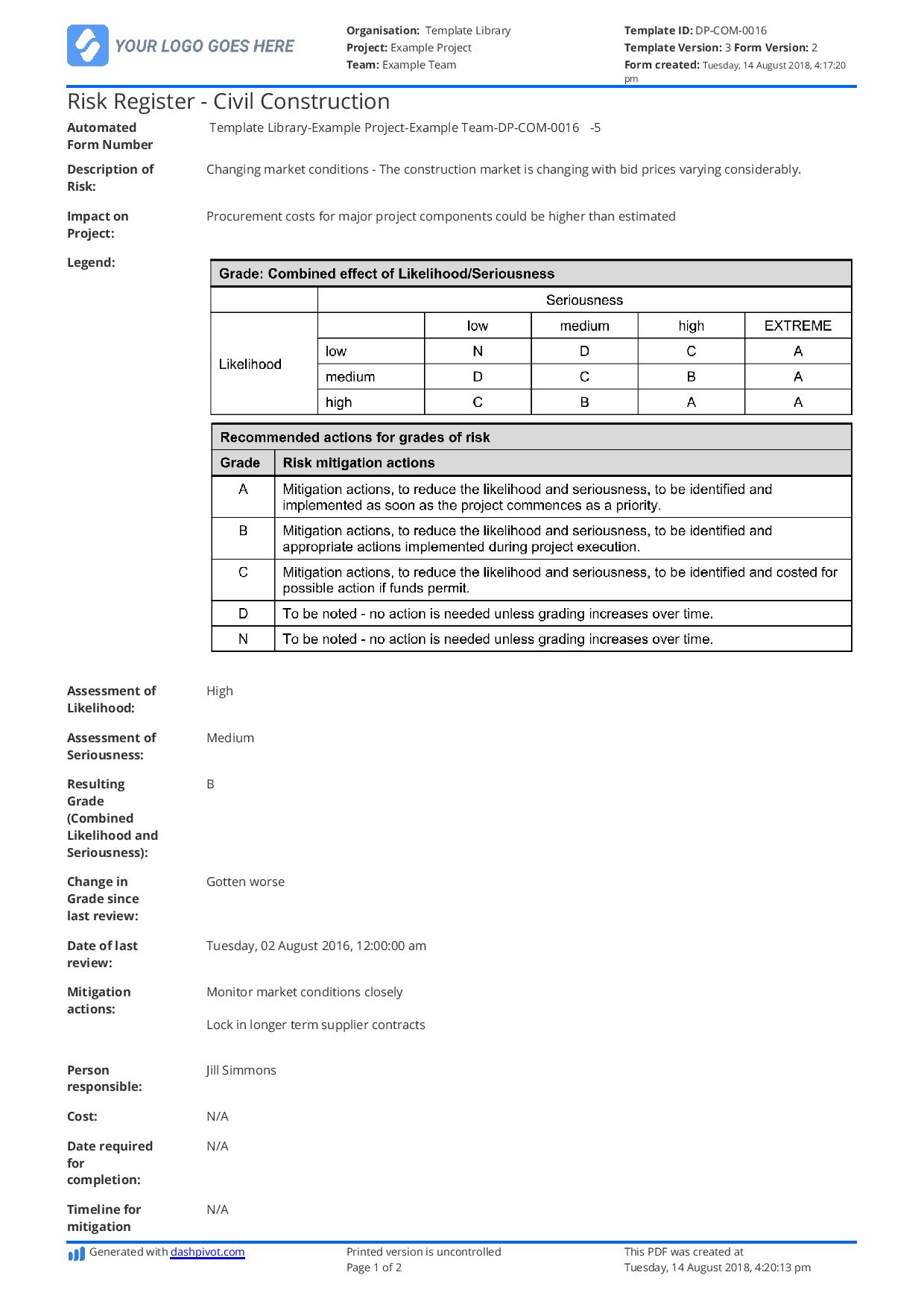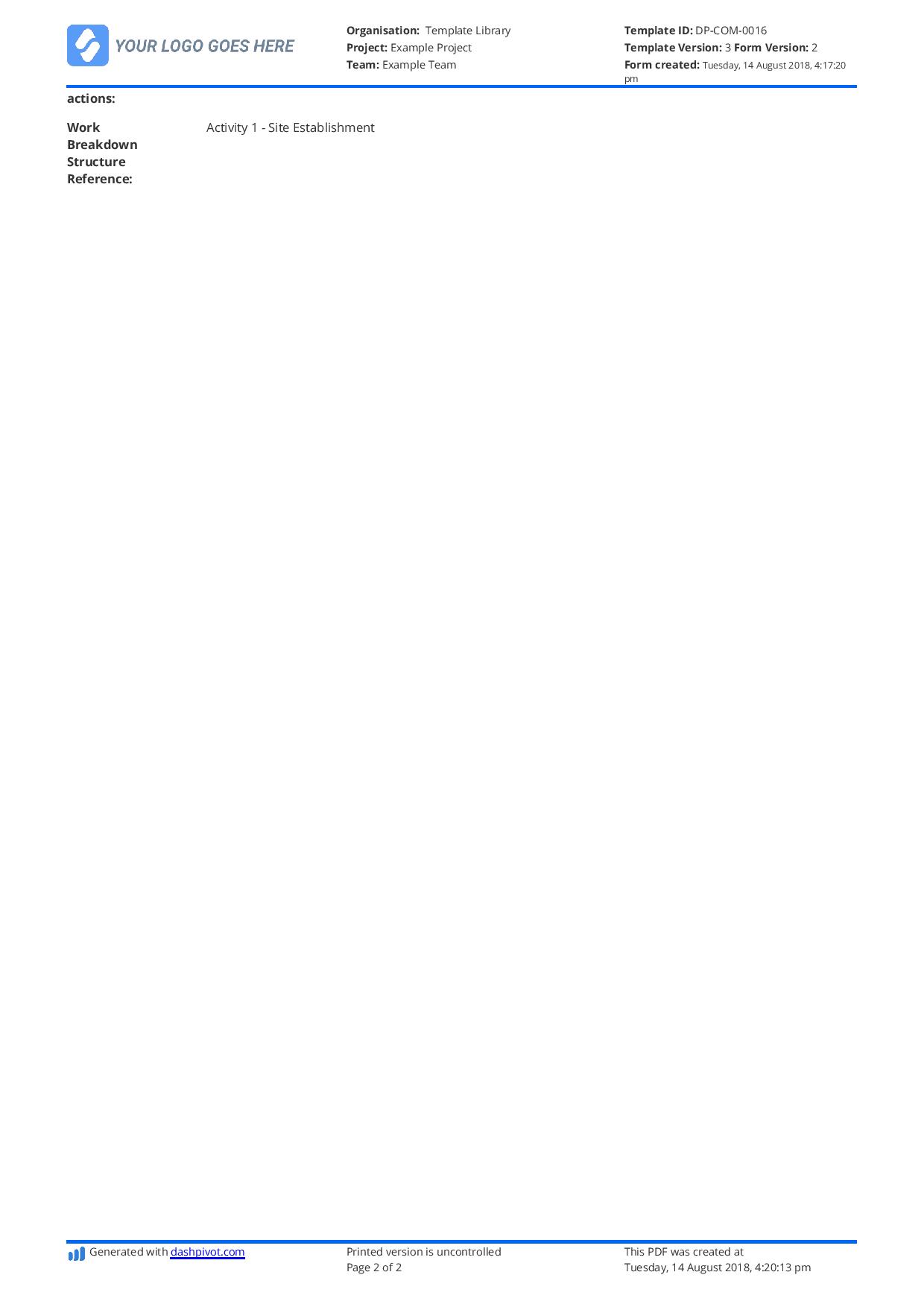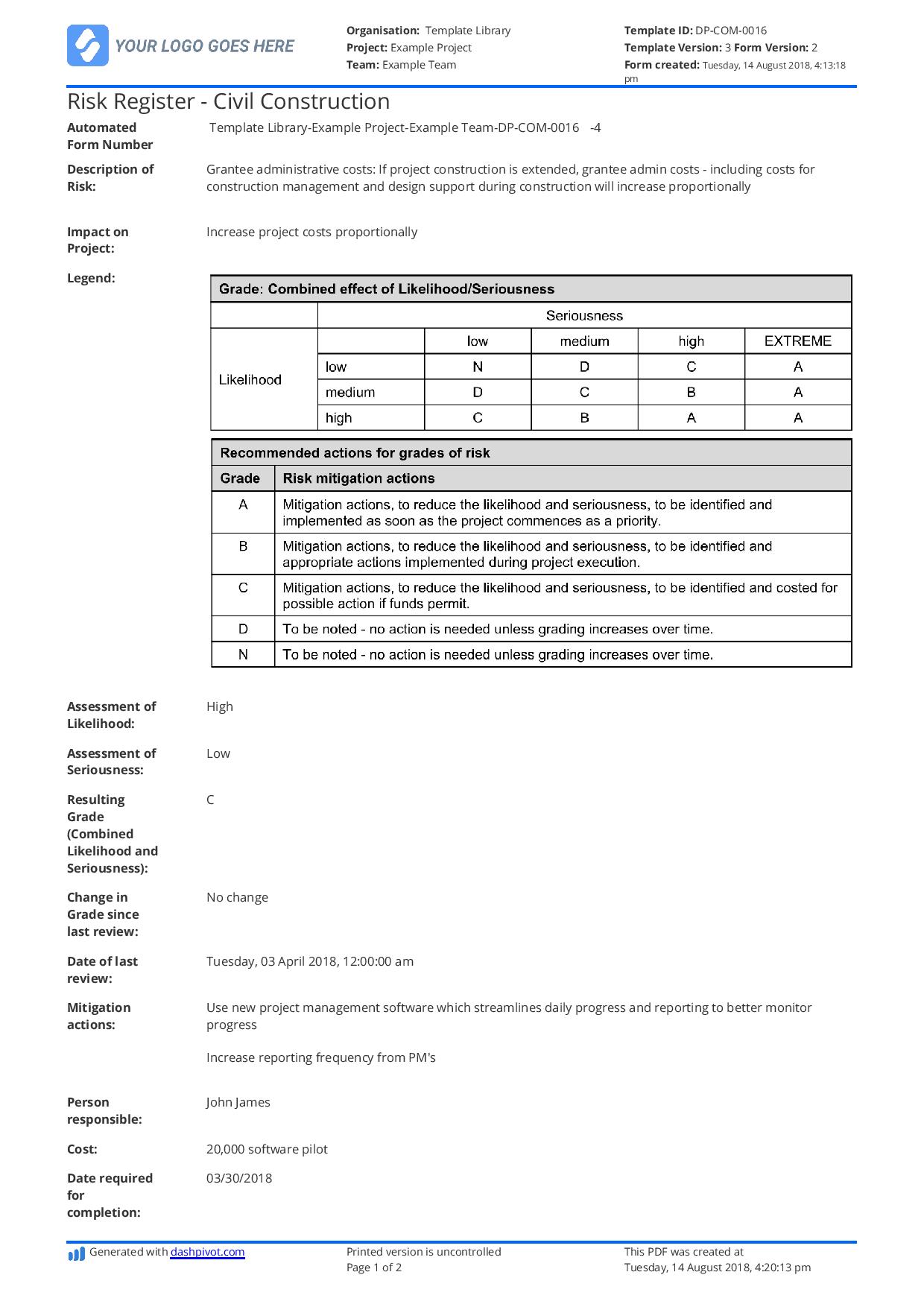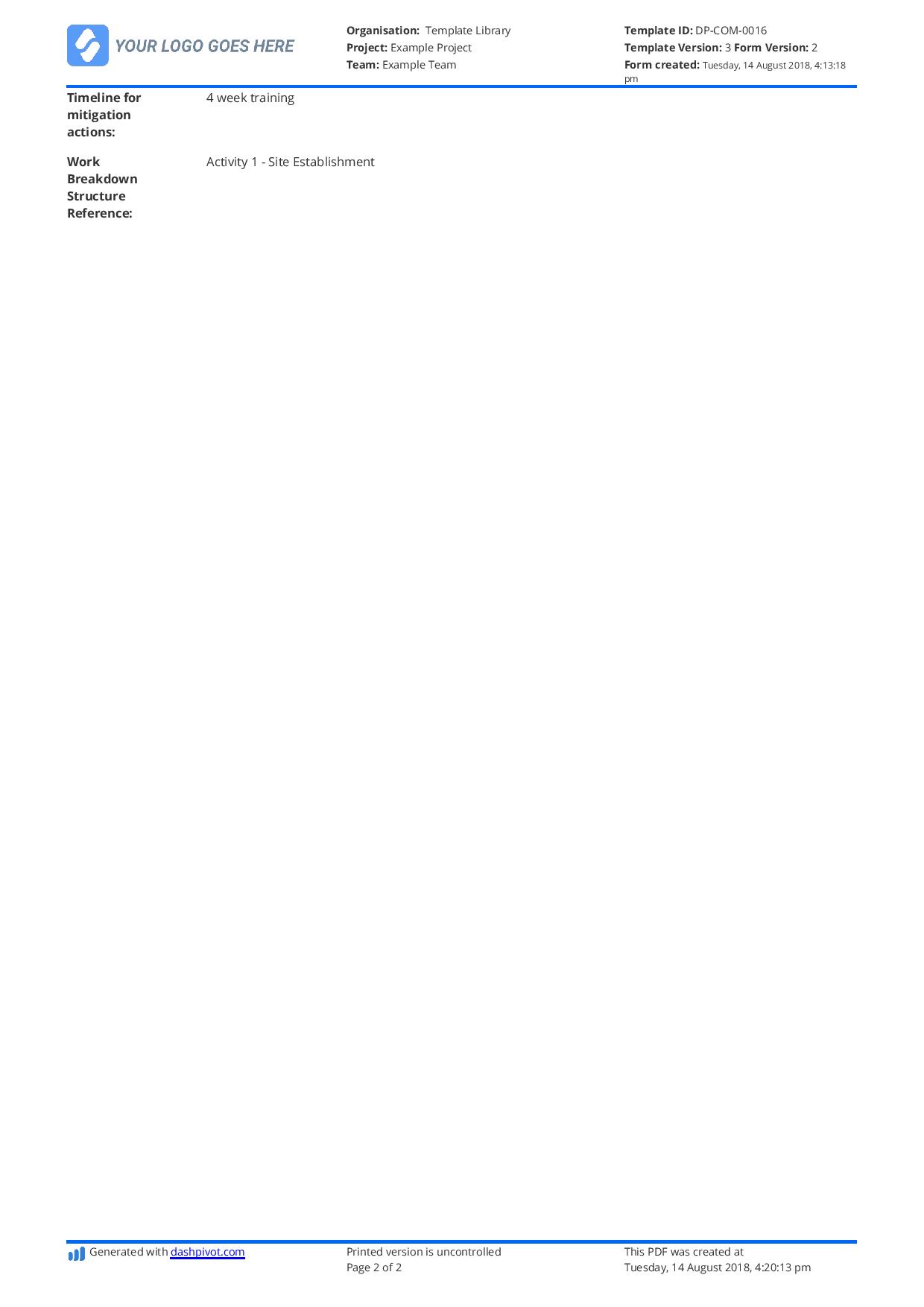Commercial – Risk registers in construction project management
Risk registers in construction project management: What you need to include
In this article, we'll talk about risk registers in construction project management, including their purpose, essential components, and tips for creating and maintaining an effective risk register to identify, assess, and mitigate risks, ensuring smoother project execution and minimizing potential disruptions.

What are risk registers used for on construction project management?
Good project management is predicated on improving performance and reducing risk. If you can do both of these things well, then your projects are likely to be successful - as are you and your company.
Managing risk is often more complicated and subjective than managing performance. It's easier to track and make changes to your teams and outputs which are largely under your control than it is to decrease the risk associated with working on million and billion dollar assets with hundreds of other parties, materials, equipment and stakeholders.
In saying this, managing risk and adequately preparing for negative eventualities is possible, and while you can't completely eliminate risk - you can mitigate risk and improve your chances of success, all at the same time.
One of the most trusted and relied upon documents and mechanisms for surfacing, understanding and managing construction project risk are risk registers.
A construction project risk register is a register which summarises all of the brainstormed or hypothesised risks associated with a project.
The risk register outlines each unique rest; describes that risk; describes the impact the risk would have on the project (and the company, workers etc.) and then scores that risk on two major dimensions:
- An assessment of the likelihood that that risk will eventuate
- An assessment of the seriousness of that risk should it eventuate
Together, these risk factors combine to create a risk assessment score, which then forms an argument as to which risks should be prioritised in terms of speed to action and resources used.
A company or team will typically conduct a risk assessment for each of their unique projects (and potentially get even more granular than that), and fill out a risk register in order to organise, categorise and then prioritise how to approach that specific projects' risks and risk profile.
An example risk register
So what does a risk register typically look like and include?
A risk register is a simple register. On the left, you feature the risks associated with a project, and to the right of that risk, it's associated properties and ratings.
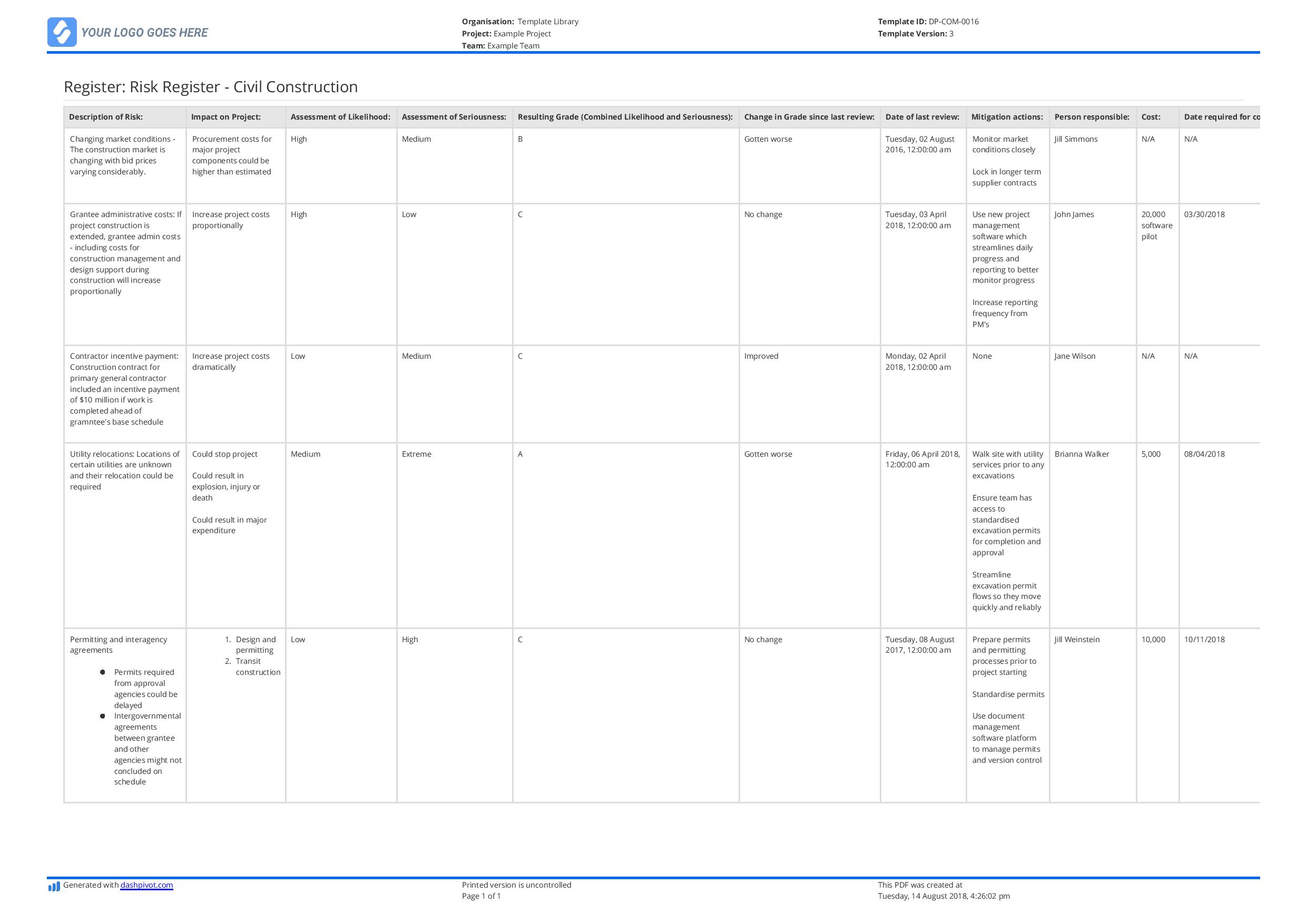
Use and edit this risk register for construction projects template for free.
So what needs to be in your risk register for your construction projects?
The intensity and comprehensives of your risk register will differ depending on the project you are preparing for or running.
A risk register for a billion dollar tunnel project will look different to a risk register for a couple of hundred million dollar building project in terms of the number of risks and the detail of that risk.
Even so, every risk register should have a number of 'key' ingredients which form the 'bones' or columns of the risk assessment:
- You'll need to include the name and description of the risk.
- You'll need to explain how this risk will impact the project e.g why is it a risk associated with this project
- You'll need to think about and then score the risk on two scales: the likelihood that that risk occurring and the seriousness of that risk if it does occur
- You'll need to combine these two scores together to come up with a resulting risk grade (consult a risk register matrix if you are not sure about the rating system)
- You'll want to cross-reference your final score with the same risk from other projects to check if the score has improved or gotten worse i.e have you gotten better at mitigating this risk since the last review
The next few columns of the risk register should be actionable items; columns which you use to mitigate the risk:
- A summary of the mitigating actions which will be taken
- The person responsible for mitigating these risks - either through direct actions or organising a fix
- The cost (where applicable) of implementing the mitigating actions
- A date and timeline for the mitigating actions to be completed
As is evident by the two core sections of your risk register, a risk register is both a brainstorming activity for making individuals aware of the very real risks associated with a project, and an activity for moving your projects forward through smart actions.
Looking for a better way to manage and mitigate risk?
As I mentioned at the beginning of the article, managing project risk is a serious component of project and company success. Every single project a company works on comes filled with risks, which can impact project progress but also tarnish (and in the worst case destroy) an otherwise legitimate company.
If you don't have the resources or processes in place to properly manage the weight and impact of these risks, then commercial management software can help you.
Commercial management software enables you to manage all of your risk in one place.
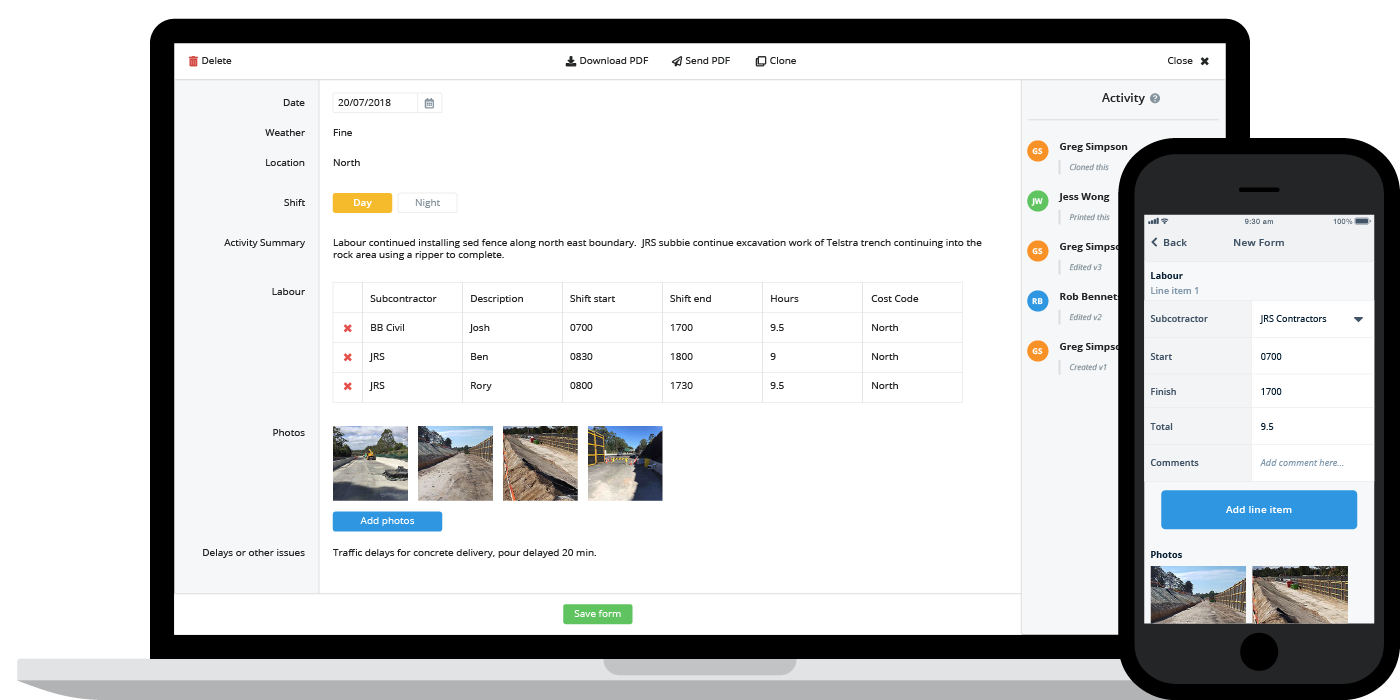
Instead of using excel spreadsheets to manage risk registers, word docs to fill in site diaries and progress reports, and people's phone to capture photo evidence, the risk register software enables you to consolidate all of these activities under 'one roof'.
This consolidation helps you build stronger records; gives everyone in your projects and teams access to the tools and information they need to be successful; and enables you to have complete visibility over what's happening on your projects at all times.
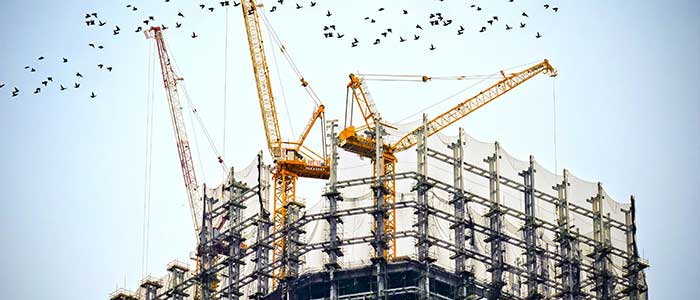
Risk Register template for Construction
A risk register with example risks for construction companies and projects - which can be easily edited and added to.

Risk Register template for Project Management
A risk register with example risks for general project management - which can be modified and added to as you see fit.

Commercial register template
Smart register you ise to keep all your information organised and easily searchable.
